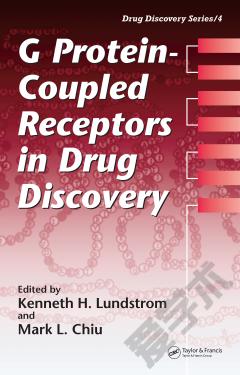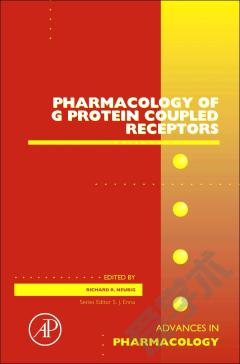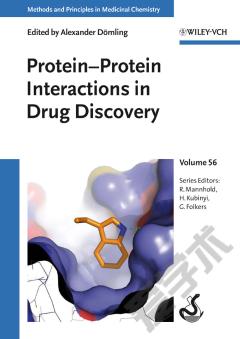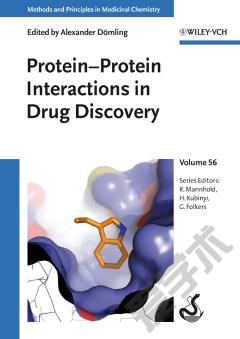G Protein-Coupled Receptors in Drug Discovery
Introduction, K.H. Lundstrom and M.L. Chiu Biology of G Protein-Coupled Receptors, K. Lundstrom Introduction Families of GPCRs Coupling to G Proteins GPCR Desensitization Other Signaling Pathways Trafficking of GPCRs Resensitization Conclusions G Protein Coupled Receptors as Targets for Drug Discovery, T. Esbenshade Introduction GPCR Family Overview GPCR Tractability: Current Therapeutics GPCR Drug Discovery Novel GPCR Features and Impact on Drug Discovery Approaches Conclusions G Protein-Coupled Receptors as Cardiovascular Drug Targets, M. Scheinin and A. Snapir Cardiovascular Physiology, Pharmacology, and Therapeutics Drugs in Development and Novel Drugs Targets Receptor Subtypes as Novel Targets Receptor Gene Polymorphisms Concluding Remarks G Protein-Coupled Receptors and Cancer, M.J. Smit and R.A. Bakker Introduction Family A GPCRs Family C GPCRs Frizzled/Smoothened Family of GPCRs Virally Encoded GPCRs Orphan GPCRs Conclusions G Protein-Coupled Receptors in Metabolic Disease, R.M. Reilly and C.A. Collins Introduction Central Mediation of Feeding and Energy Homeostasis Peripheral Signals Affecting Nutrient Sensing and Utilization Conclusions G Protein-Coupled Receptors in CNS Drug Discovery, R. Raddatz and D.S. Hartman Introduction Psychiatric Diseases Pain and Analgesia Neurodegeneration Neuroendocrine Function Orphan GPCRs in the CNS Conclusions Recombinant G Protein-Coupled Receptors for Drug Discovery, K. Lundstrom Introduction Cell-Free Translation E. coli Expression Other Prokaryotic Systems Yeast Expression Insect Cells Mammalian Expression Comparison of Expression Systems Conclusions High Throughput Screening Assays for G Protein-Coupled Receptors, U. Warrior, S. Gopalakrishnan, J. Vanhauwe, and D. Burns Introduction Source of Material and Assay Diversity High Throughput Screening Receptor Binding Assays-General Considerations Functional GPCR Assays Inverse Agonists and Constitutive Activities Microphysiometer Assays Screening for Modulators of Orphan Receptors Conclusions Molecular Bioinformatics of Receptor Binding and Activation, K.P. Willey, H. Obermann, and J.B. Procter Not All 7TM Receptors are GPCRs Receptor Classification by Ligand Size Ligand Diversity Conforms to Receptor Phylogeny Structural Flexibilities of Membrane Receptors Molecular Bioinformatics in Drug Discovery Sequence and Structural Searches for an Activation Mechanism The Cysteine Shuffle Redox Control of Receptor Activation Smells Rank as the Smallest 7TMR Agonists Bioinformatics with Biological Sense Structure and Dynamics of G Protein-Coupled Receptors, J. Klein-Seetharaman and M.C. Loewen Introduction Structure, Stability, Dynamics, and Conformational Changes of Rhodopsin Structures, Dynamics, and Conformational Changes of GPCRs Conclusions Towards Crystallization of G Protein-Coupled Receptors, M.L. Chiu and M.P. MacWilliams Introduction Overexpression and Purification Detergent Selection Sample Preparation Crystallization Methods Micelles and Bicelles Lipidic Mesophases Bicelles, Lipopeptides, and Nanodiscs Crystallization Case Study: Rhodopsin Conclusions Novel Solid-State NMR Methods for Structural Studies on G Protein-Coupled Receptors, A. Lange and M. Baldus Introduction High-Resolution Solid State NMR Sample Preparation Applications Conclusions and Outlook Structural Genomics Initiatives, K. Lundstrom Introduction Structural Genomics Programs on Membrane Proteins Structural Genomics Initiatives Including GPCRs MePNet Approach Conclusions Molecular Basis of Dimerization of Family A G Protein-Coupled Receptors, G. Milligan Introduction Quarternary Structure of Family A GPCRs Consequences of the Dimerization of the Family A GPCRs The Mechanisms of Dimerization of the Family A GPCRs Conclusions Orphan Receptors: Promising Targets for Drug Discovery, Y. Saito, Z. Wang, and O. Civelli Introduction Search for Endogenous Ligands of Orphan GPCRs Example of Deorphanization: The MCH Systems and Its Impact on Drug Discovery Conclusions and Perspectives Index
{{comment.content}}








 京公网安备 11010802027623号
京公网安备 11010802027623号